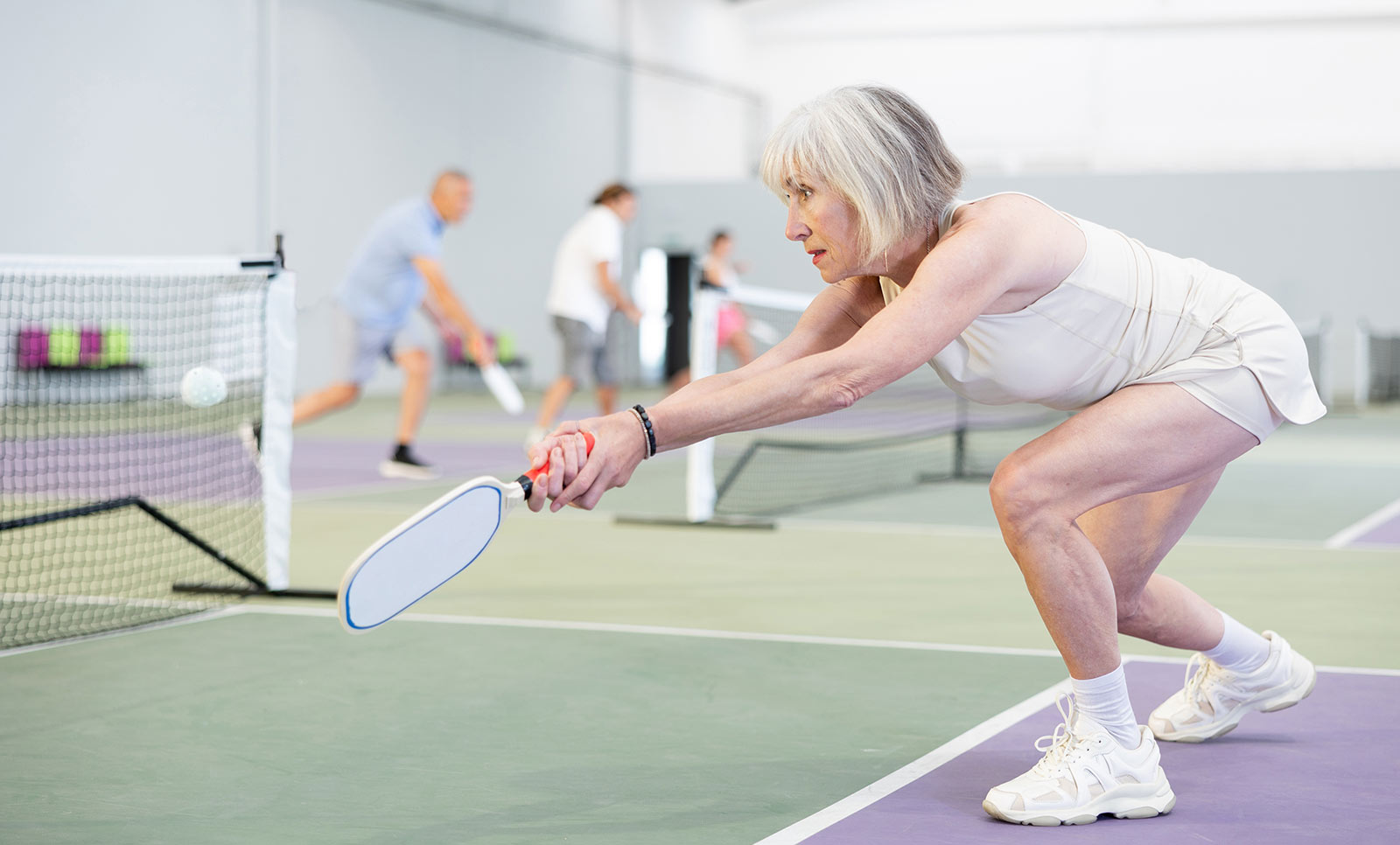Book an assessment with Zoomers now!
Use our online booking tool to find a time that works for you!
No matter how new (or old) pickleball is to you, you have likely woken up at least once after a tough game or a day of tournament play and noted that your muscles felt a little stiffer and sorer than usual. You may also have noticed more joint pain; particularly in the knees. This may have resolved within a few minutes of light activity or may have persisted for a day or two before you felt like you fully limbered up again.
You might not give these symptoms a second thought. Here is why I think you should.
On average, adults over the age of 40, lose 1-2% of their muscle strength every year. Although playing a sport like pickleball is a healthy physical activity for the body, it does achieve meaningful strength training. Therefore, despite playing pickleball regularly, your muscles may slowly be losing strength. Over time, this strength loss can reduce overall sport performance and leave you more vulnerable to muscle and joint injury. A key indicator that your level (volume or intensity) of sport participation is exceeding the capacity of your muscles is muscle and/or joint discomfort in the 1-2 days following the injury.
Of course, it is normal to occasionally have discomfort after playing pickleball. However, if it is occurring on a regular basis, it should be considered a warning signal that the muscles are being used beyond their ability. When the muscles are being used beyond their comfortable capacity, you are at more risk for incurring a muscle strain (ie: pulled hamstring), joint sprain (ie: ankle sprain) or having increased irritability of joints with sensitivities like osteoarthritis.
Muscle strains during pickleball become more likely because as the muscles fatigue, they aren’t able to generate force as well or as quickly. This leaves them vulnerable to injury during forceful contraction or quick stretches.
Joints, particularly the knees and ankles, also become susceptible to injury as the muscles fatigue while playing pickleball. The joints rely on the strength and speed of muscular contraction to prevent excessive movements that would otherwise injure the surrounding joint ligaments.
Conditions like knee osteoarthritis rely on the balanced strength of the muscles in the leg and trunk to optimize alignment during the movements required to play pickleball. As muscles fatigue, alignment typically falters causing increased and abnormal pressures in the affected joints; this can cause an exacerbation of symptoms that are otherwise typically well-controlled.
The good news is that strength training can be relatively easy to add into your weekly routine. The Canadian Physical Activity Guidelines recommend doing two sessions of strength training each week for all major muscle groups.
Pickleball players can incorporate basic movements like squats, lunges, core planks, push-ups and resistance band work for the upper back/shoulders to see a significant improvement in the value of their strength training programs. The key in integrating these exercises into a regular routine is ensuring you are using the correct technique, exercise volume and have a stepwise approach to strength training program progression over time.
Knowing how to get started with a proactive strength training program for pickleball like this can be daunting. Working with a member of the Zoomers physiotherapy team can help you understand which areas should be of priority in your program and can help ensure you have a targeted program with good technical execution. With all of these pieces in place, you should see optimal results in terms of improved pickleball sport performance and injury prevention. If you’re ready to get started, book with a Zoomers physiotherapist now.
Book an assessment with Zoomers
Use our online booking tool to find a time that works for you!


